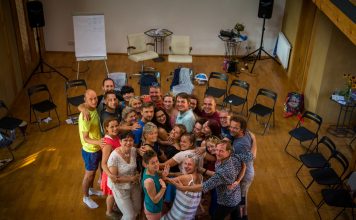“Some people find it helpful to go to the cemetery and grieve, and they leave their grief in the cemetery,” said Algordanza Chairman Veit Brimer. “There are some people who, for whatever reason, do not want to have this farewell.”
“Astonishingly these are mainly Christian people. They say: ‘Why should I say goodbye? I’ll see my husband in 15 years in heaven anyway,'” Brimer said in his office overlooking the town of Chur and its surrounding steep mountains.
The technology for making artificial diamonds was first pioneered by General Electric in the 1950s, and mirrors nature by subjecting carbon to huge pressure and temperature.
Algordanza — which means “remembrance” in the local language Romansch, spoken in some parts of the Swiss canton of Grisons — is one of a handful of companies offering artificial diamonds that have sprung up as the technology has improved.
U.S.-based LifeGem and Britain’s Phoenix Diamonds, for example, also offer diamonds made from hair, which contains more carbon than ashes meaning a gem can be created from the hair of a living person, or from someone who has been buried rather than cremated. LifeGem even offers diamonds made from dead pets.
“Some people find it is a great honor and remembrance,” said Laura Simanton at the Gemological Institute of America (GIA). “The technology is certainly getting better.”
John Cordova, vice president of California-based engagement ring store Robbins Bros said synthetic diamonds are “in general a little less expensive” than natural ones, but it depends on each individual stone.
Algordanza’s Brimer first saw a business opportunity in “remembrance” diamonds after meeting a Russian chemist, who explained how gems could be created in a laboratory.
Initially Brimer, who used to work in information technology, and his partner Rinaldo Willy thought their clientele would mainly be young, but they have been surprised that “actually our customers come from all walks of life.”
Bobby Thurman — of Nelson Funeral Service in Arkansas, which offers diamonds to both burial and cremation clients — decided to have LifeGem make a diamond from combined samples of his own and his family’s hair.
Many clients from Europe travel to Chur to accompany the deceased on their final journey and meet the people who will turn the ashes into a diamond.
Often the gem is mounted in jewelry, which the bereaved then wear to maintain close contact with their loved one. But some customers have different plans.
One widow, Brimer said, carried around her husband’s diamond in her handbag. Others have them mounted on the deceased’s table in the local pub.
Brimer says remembrance diamonds do not appeal to everyone, and is astonished at Algordanza’s success — it does not give sales figures, but said the first quarter of 2008 — the latest details publicly available — was its most successful three-month period yet.
In its first year, 2004, the company sold one diamond. These days it is creating about 60 a month, which Brimer attributes to word-of-mouth recommendations and media coverage, as Algordanza does not advertise.
Because only 2 percent of a corpse’s ashes are carbon, which then has to be purified, the largest size diamond offered by Algordanza is 1 carat, which costs 13,328 euros.


































